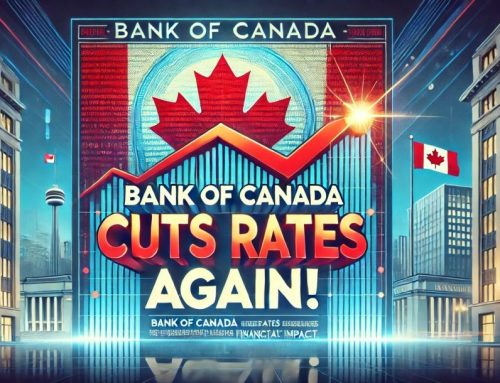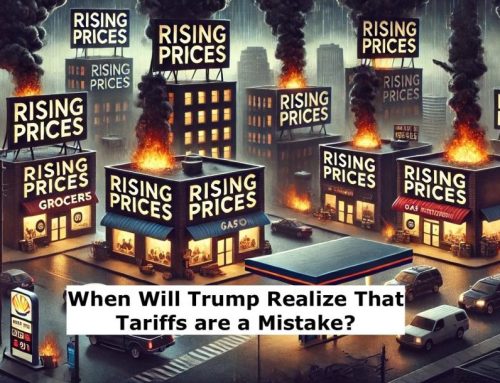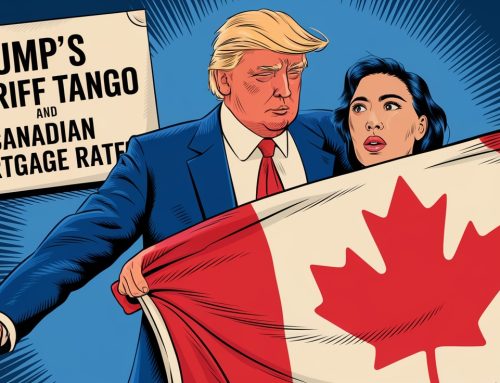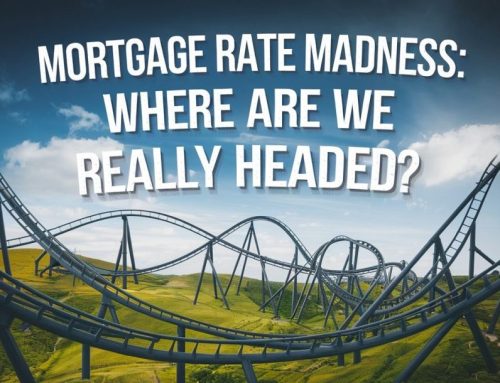Given the significant increases we have seen to prime rate over the last 23 months, the term ‘variable rate mortgage’ has been the source of pain for many households. At the start of 2022, it was expected that the prime rate would increase by no more than 1.00% to 1.25%. Instead, we saw a staggering increase of 4.00% by the end of the year, followed by another 0.75% in 2023.
Forecasts can and do change, sometimes for the better and sometimes for the worse. In early 2022, it was for the worse. Much worse.
It’s always understood that there is additional risk with a variable rate mortgage. Over the last 40 plus years, homeowners have come out ahead with a variable rate mortgage more than 80% of the time. While those are pretty good odds, they are still nowhere close to 100%, and it’s this uncertainty that brings the risk.
In 2023, everyone was avoiding variable rate like the plague. Only a small few ended up choosing a variable rate as there they were priced substantially higher than the fixed rate alternatives… and still are today.
Variable Rate Mortgages in Today’s Market
Fast forward to today and the economic outlook is starting to look a lot rosier. Does this mean that you should now be considering a variable rate mortgage?
In my Ultimate Guide to Choosing a Variable Rate Mortgage, I outlined five things that you need to consider before choosing a variable rate mortgage, three of which are relevant to today’s market specifically:
- Market outlook
- Spread between fixed and variable
- Your tolerance for risk
Market Outlook
This is what economists are predicting over the next few years. But it’s important to remember that economic forecasts have been significantly off the mark in recent years. Currently, the major six banks anticipate that the Bank of Canada will begin reducing its rate between 1.00% and 1.75% by the end of 2024. Most economists are expecting the cuts to start in the second quarter, likely on the April 10th which is the 3rd scheduled announcement from the Bank of Canada this year. The next announcement is set for March 6th, where no changes are expected… at least not yet.
While the current forecasts from leading economists are promising, the Bank of Canada has indicated that they won’t consider lowering their rate until they are confident of achieving their inflation target of 2.00%. They don’t foresee this happening until 2025.
The BoC had been including a warning in all their announcements over the past year that they are prepared to increase their rate further if needed. However, they have removed this from their last press release on Jan 24th, which is a great sign. It’s no longer a question of whether they will need to increase further. It’s about how long they will need to keep the current rate where it is. Barring any unforeseen events, this means it’s not likely that we will see any more hikes in this cycle. Fingers crossed.
Spread
This is the rate gap between fixed and variable. For example, there are some scenarios where you can get as low as prime -1.30%* (which is currently 5.90%). The lowest 5-year fixed rate in the same category is 4.74%*. This results in a 1.56% spread between the two which is significant. This means it would take seven standard sized rates cuts at 0.25% a piece for the variable rate to move below today’s lowest 5 year fixed. But just as we saw oversized rate hikes in 2022, we’re expected to see oversized rate cuts in 2024. We’ll see.
The lowest 3 year fixed rate has now dropped to a range of 4.89% to 5.29%. Note the 4.99% 3 year fixed rate is available for insured purchases only, closing within the next 45 days.
In most markets, variable rate mortgages start off with a lower rate than the fixed rate alternatives. As the rate is lower from the get-go, you’re starting out with a winning position.
But it’s the opposite with today’s market as variable rates are higher than fixed. This means you’re starting out at a disadvantage, digging yourself a financial hole from the beginning. The larger the spread and the longer it takes for your variable rates to drop, the deeper the hole.
Once the variable rate dips below the fixed rate, that’s when you begin to offset the extra costs that accumulated due to the initially higher variable rate. But that doesn’t mean that you would then be ahead by choosing a variable rate. It just means that you’re starting to dig yourself out of the hole.
Your Tolerance for Risk
Risk tolerance varies from person to person. What’s right for one individual might not be suitable for another. Opting for a variable rate requires readiness for the worst-case scenario, both financially and mentally. Although no further rate hikes are currently anticipated from the Bank of Canada, there is still no guarantee that there won’t be another hike. It’s also possible that variable rates could stay higher for longer than expected.
It ultimately boils down to your personal comfort level. If the thought of fluctuating rates causes you significant concern, a fixed rate might be the better choice for you. However, if you’re comfortable with the potential for further rate increases or prolonged higher rates, then considering a variable rate could be a viable option.
News and its Influence on Rate Forecasts
All it takes is one piece of news to alter the forecasts. They can definitely go awry in current, or unknown situations that the future may hold. Last week, the US jobs report confirmed strong employment south of the border. As strong employment is a driver of inflation, this was disappointing news. The report confirmed that the US labour market added 353,000 new jobs in January, which was nearly double what had been forecasted. This resulted in bond yields spiking up almost 6% as of today. While this increase may not be substantial enough of a jump trigger an increase to fixed rates, it’s enough to capture everyone’s attention. It’s a sign that we’re still not yet in the clear and it’s still possible that cuts could be pushed out further. Time will tell.
Fixed or Variable – The Verdict
The choice between fixed and variable rates is a deeply personal decision and what suits one individual may not be the best option for another. In other words, just because your neighbor chose a variable rate doesn’t necessarily mean it’s the right decision for you, and vice versa.
The recent spike to bond yields is a bit of a concern, but still too early to make any sort of call one way or the other. If the yields were to continue to rise, then we can expect increases to fixed rates. But when becomes more apparent that the Bank of Canada cuts are imminent, bond yields will fall, and we can expect fixed rates to fall with them. But anything can happen until that point.
If the Bank of Canada cuts their rate this spring, then chances are strong that you’ll come out ahead with a variable rate mortgage… even though you’re starting off with a much higher rate. The sooner the rate cuts, the better your odds of coming out ahead… and vice-versa.
This is an evolving situation, so it’s important to consider your own financial situation and comfort with risk when making this decision.
Conclusion
Just as in the past, no one knows for sure what will happen. This is why you need to do what feels best to you. It’s always easy to go back and say that you should have chosen a different option once you know the outcome. But since none of us can predict the future, we have to make our decision based on what we think is going to happen and what we feel most comfortable with.
If the current forecasts are correct, then you would likely come out ahead with a variable rate. But if the forecasts for the expected rate cuts continue to be pushed out, then variable rate could end up being an expensive choice.
If you’re okay with the risk that the forecasts may not pan out as planned, then a variable rate mortgage would be worth considering. But if you’re concerned about the future of rates, then a fixed rate mortgage would be the better choice for you.
As I say in my book… the best choice isn’t the one that saves you the most money, it’s the one that allows you to sleep soundly at night.








Leave A Comment